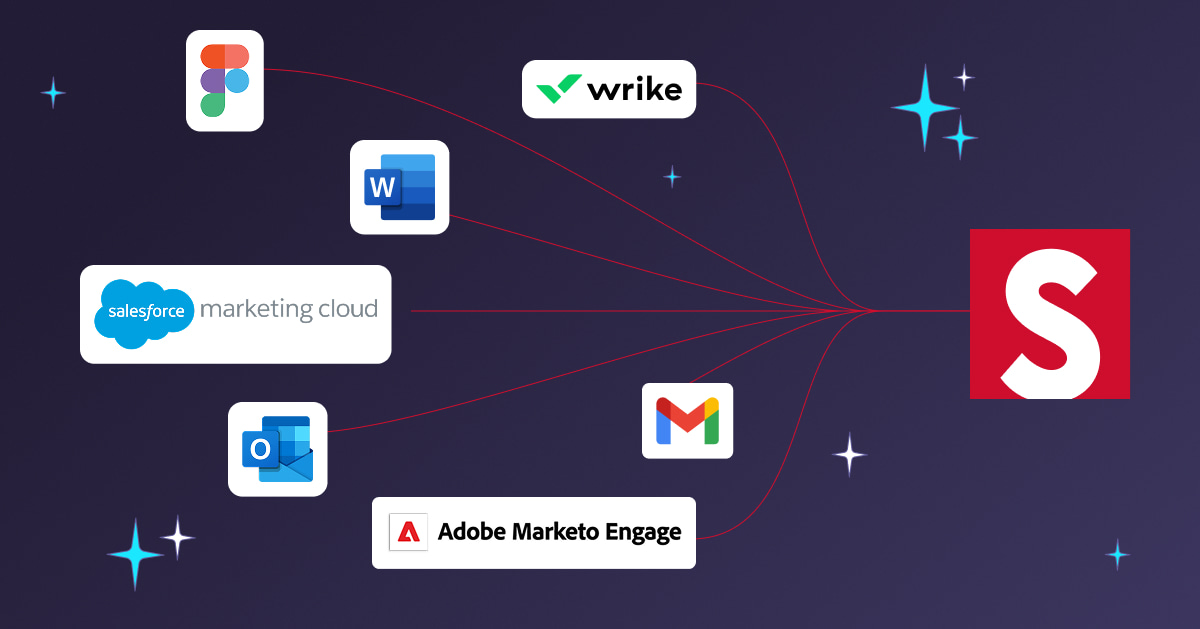Three out of four of the most recognizable brands in America have some form of internal creative operations. Interestingly, those in-house units produce most of the digital marketing for those brands. The majority of that work is creating emails.
Whether B2C or B2B, email is a marketing workhorse. Nearly 90% of marketers say it’s their primary channel for generating leads. It’s 40x more effective at customer acquisition than major social media platforms and produces an ROI of about $40 for every $1 spent.
As effective as emails are as a marketing channel, creating them is astoundingly inefficient. It takes two weeks or more for 80% of companies using this marketing form to get just one email out the door.
After examining hundreds of creative operations, Stensul found four significant contributors to inefficient email creation:
- The email builder in the organization’s ESP/MAP
- The email templates
- Resource use
- The creative operations team
It starts with the ESP/MAP email builder
The email builder in an ESP/MAP is at the core of an inefficient email creation process. It’s also the epicenter of bottlenecks and errors.
An ESP/MAP is difficult to use. Because an ESP/MAP is a vital component of a martech stack, it can impact the creation ecosystem if undertrained individuals get in and disrupt its operation. The more people access the ESP/MAP builder, the more likely something terrible will happen. Most ESPs/MAPs house personally identifiable information (PII). Given that fact, the fewer people with access to the system and sensitive data, the better.
Of course, if non-technical users break something during an email build, a technical resource must assist those people instead of doing higher-value work that best uses their skill set.
Another set of challenges the ESP/MAP presents is brand, compliance, and quality assurance controls. They’re formidable challenges because there are no such controls in an ESP/MAP. As a result, your creative operations team members must be logo police—a role no creative enjoys playing—requiring re-dos of emails that eat up time and can delay launches or worse, see emails with errors deployed. It goes beyond design and aesthetics to encompass QA, compliance with accessibility, data security rules, and more.
The templates your creative operations uses
If you’re using an ESP/MAP email builder, the moment there’s an email that doesn’t fit into a prebuilt template, you’ll need to touch the code. When that happens, the process falters or grinds to a halt.
Along with that, templates do not age well. They might look great and render well today, but will that still be the case in three months? Your team needs to manage and maintain those templates, which adds overhead and takes time away from creative work.
Building emails with templates in an ESP/MAP generally takes 11 hours per email. Although faster than a manual process, it is still time-consuming, especially when considering the rising volume of email requests you’re getting.
Use of creative operations’ resources
A complicated and time-consuming process will not efficiently use your creative operations’ resources. For example:
- Every email creation needs a designer
- All template revisions require rendering tests
- Any image cropping or text overlay needs someone skilled in Photoshop to handle it, with back-and-forth very likely
- Quick updates require rendering tests
- Email creators don’t have separate creation environments to work in
- Training and follow-on hand-holding are necessary
- The review and approval process is disorganized and lengthy
Your creative operations team
Your team’s workload affects their efficiency and morale. Think of the sheer number of emails they must create each month. It’s a matter of how much can be done—with quality outcomes—in the available time. The more done by a core team, the greater chance for bottlenecks, going back-and-forth with requesters, and system-halting errors.
By having your team create emails in an efficient email creation process, they get more efficient. They also feel better about what they’re doing and where, which means they’ll be increasingly more productive team members.
To learn more about having your creative operations perform at a higher level, get the Stensul eBook, How to boost the efficiency of your creative operations.




